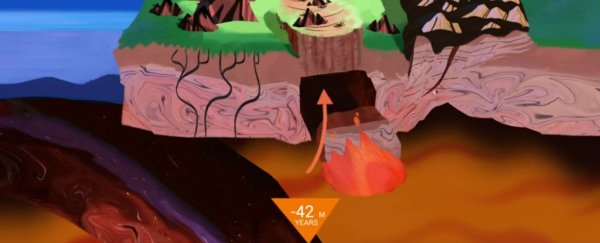North America is one of the most geologically and environmentally diverse places on Earth, boasting just about every type of environment there is - from the tropical regions of southern Mexico to the frozen north of Canada, with forests, mountain ranges, and deserts in between. But how did all this get here?
The episode of Ted-Ed above explains all the crazy continental collisions and break ups that gave the North America we see today its shape.
In case you can't remember your high school geology classes, tectonic plates are large landmasses that basically shift around on top of Earth's mantle, creating a shell around the globe.
Since these plates continuously move, they often rub together and cause earthquakes. There are seven major tectonic plates covering the globe (one for each continent).
But they weren't always so separate. The story of North America starts 750 million years ago, when the supercontinent Rodinia became unstable, breaking loose and forming what's now known as the west coast of America.
Over the next few hundred million years, the supercontinent was being constantly battered by island chains, causing it to get bigger and bigger.
Then around 250-million-years ago, things got really interesting, as Rodinia - by this point called Laurentia - smashed into the African Plate, forming the famed supercontinent Pangaea.
Pangaea didn't last forever, though. And the way it broke apart is responsible for the unique volcanic activity and rocky formations we see in North America today.
We don't want to give too much away, but basically everything that happened next was responsible for the formation of the San Andreas Fault, the Grand Canyon, and the giganticsupervolcano beneath Yellowstone National Park - which, luckily for us, hasn't erupted for the last 174,000 years.
Check out the video above to see it all in action for yourself, and don't forget that, even if we feel pretty stable for now, the Earth is still churning about under our feet - and will continue to do so long after we've left the planet.
